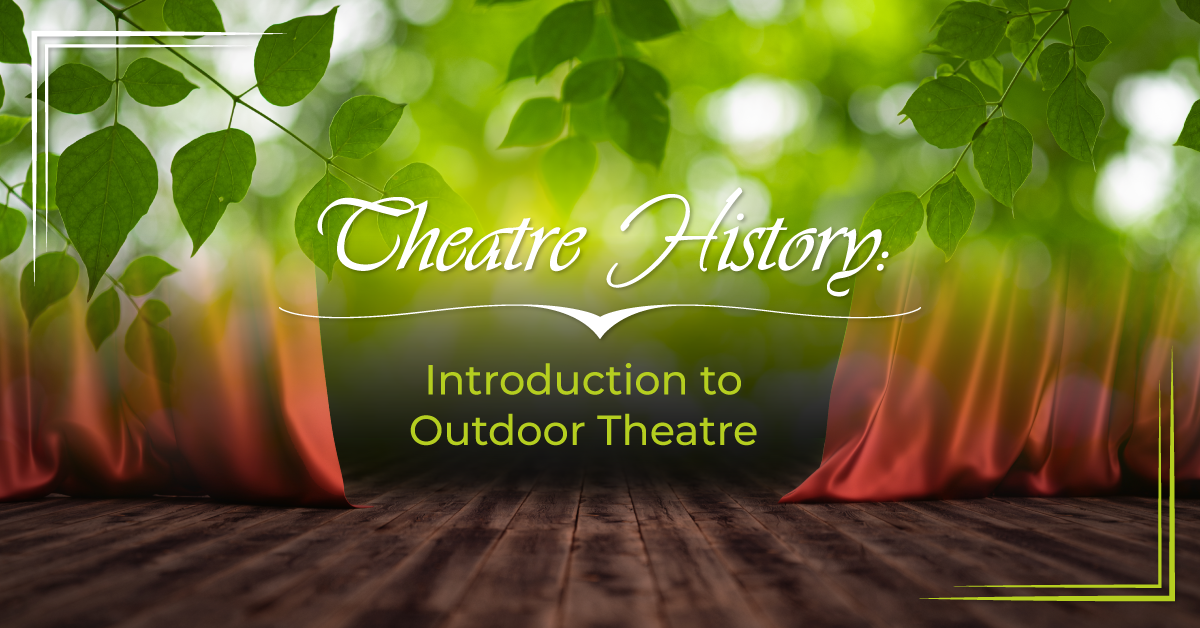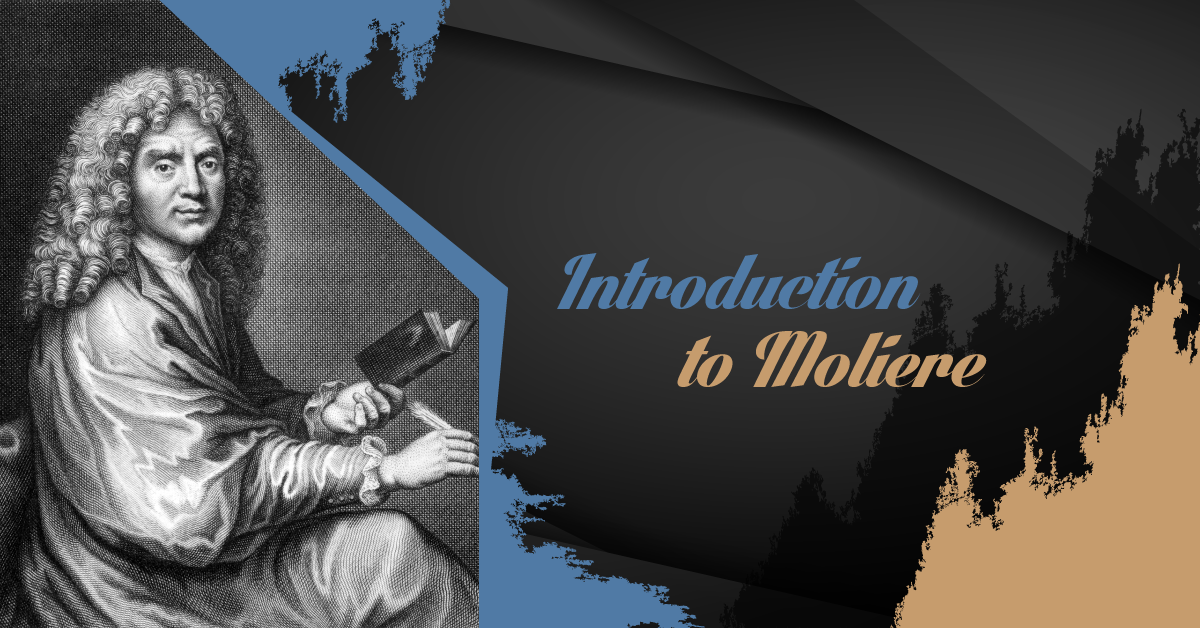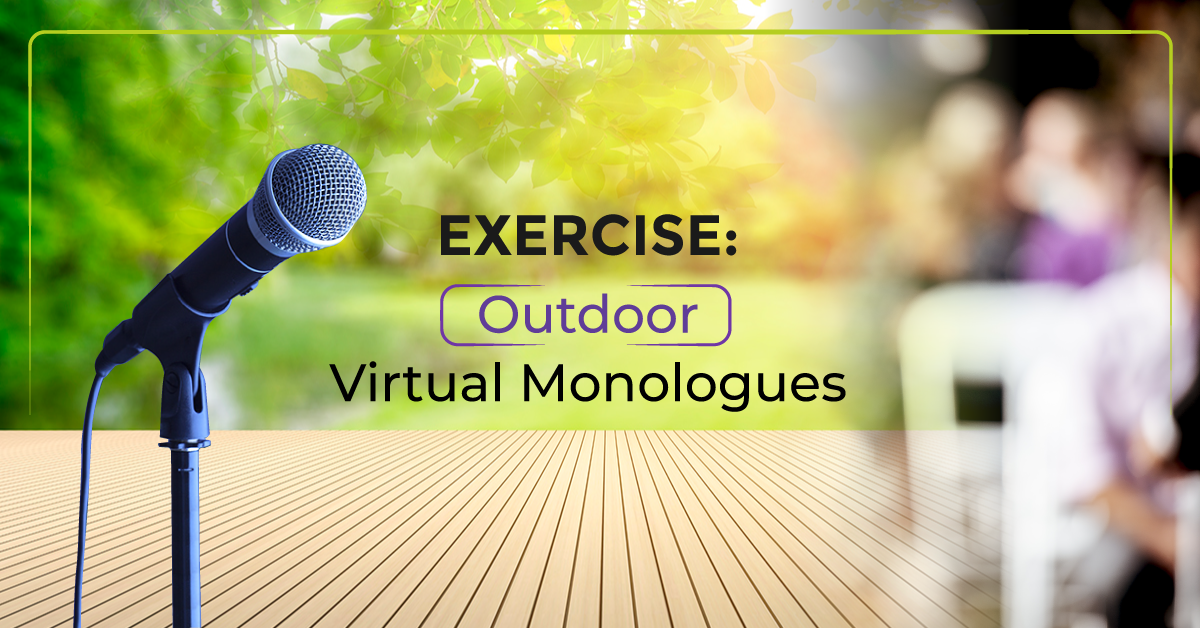By
Kerry Hishon
Theatre History: Introduction to Outdoor Theatre
The sun is shining and the weather is getting warmer, so let’s take advantage of that and learn about outdoor theatre. There are many historical examples of theatre that was staged outdoors. Here is a brief overview of a few of them.
Ancient Greek Drama
- Outdoor theatres consisted of an orchestra (stage), skene (scene building — a backstage area where actors changed), and theatron (audience viewing area). Circular seating was often built into the slope of hills.
Ancient Roman Drama
- Theatres were man-made and both semi-circular and fully circular. The audience section (cavea) was not roofed, but awnings (vela) could be pulled over to provide temporary relief from rain or sunshine.
Mystery Plays (Medieval)
- Mystery plays were performed by trade guilds, focusing on biblical stories that referenced their profession (for example, a baker’s guild would perform a reenactment of the Last Supper). These plays were performed outdoors on platforms mounted on wheels called pageant wagon stages and could be moved around.
Commedia dell’arte (Italian theatre)
- Travelling commedia dell’arte troupes often performed outdoors on platforms, at outdoor festivals and celebrations, or in popular areas such as a piazza. Troupes preferred not to stay in one place for too long so audiences would be sad to see them go and more likely to invite them back.
English Renaissance Theatre
- Public theatres were three stories high and built around an open space at the centre — essentially a platform surrounded by the audience on three sides, with the rear side for actors’ use. The theatres were open to the sky (open-air theatres).
- The Blackfriars Theatre came into regular use in 1599 and was roofed rather than open, which began the move towards indoor theatre.
Street Performances/Busking
- Street performance is practiced all over the world and dates back to antiquity. Performances can be anything that audiences find entertaining, such as storytelling, poetry, singing, dancing, clowning, or mime, and can occur any place an audience happens to be.
Small Group Exercise:
- Divide students into small groups. If you’re working online, send each group to their own virtual breakout room.
- Assign each group a different historical time period.
- Have students search for photo examples of the outdoor theatres of the era.
- Bring the class back together. Have each group show their examples to the rest of the class and give a brief verbal outline of any important details they discovered.
- Once all groups have shown their examples, discuss the following:
- What aspects of these outdoor theatres have endured throughout time?
- What do you think are some advantages and disadvantages of performing outside? Consider this for both performers and audience members.
Click here for a free exit slip and rubric.
Download For Free
Related Articles
Theatrefolk is the Drama Teacher Resource Company. We are your one stop shop for Plays, Resources, and Curriculum Support - all specifically designed for High School and Middle School drama teachers.
Copyright © 1995-2025



